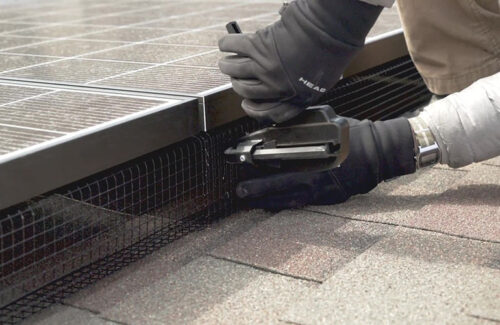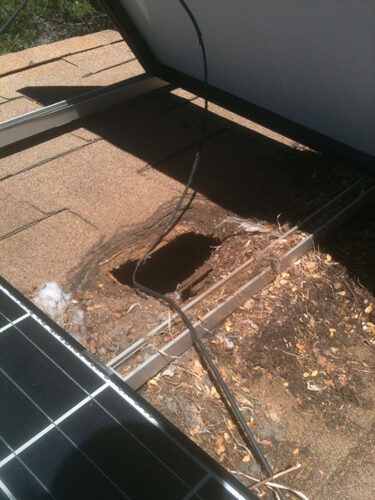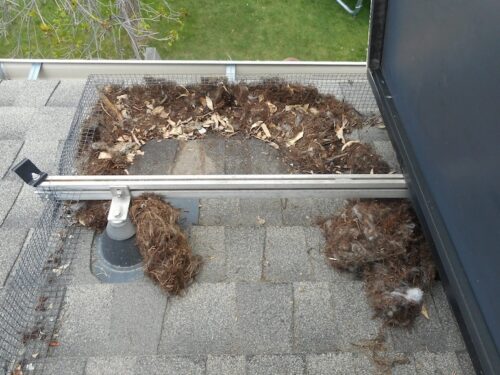
The best strategy to prevent pests from invading rooftop solar panels
For solar installers and contractors, understanding and implementing the latest and effective pest control solutions is not only a value-added service, but also a key link in ensuring the long-term feasibility of solar energy investment and healthy customer relationships. In other words, it's time to phase out plastic cable ties.

Understand the threat of pests to solar panels
Animal problems can occur anywhere, sometimes even in very concentrated and seemingly inexplicable ways. A community may experience large-scale pest infestations, while solar energy users throughout the city remain unharmed. A household may have been free of pests until their neighbors installed animal protection devices and the expelled animals moved in next door.
Looking at residential embedded solar systems, installers can use several effective strategies to avoid pest infestations and damage.
The latest physical barrier strategy
Physical barriers are a reliable method for protecting solar energy projects. After proper installation, these barriers can enclose the perimeter of the solar panels between the roof and the module frame. The following are different physical pest barriers for solar panels:
Fence material options
With the advancement of wire mesh materials and tools, it has become the preferred choice for pest control. Metal wire mesh is usually supplied in roll form, with a width of 4 to 10 inches, and can be cut and shaped according to the specific size of the solar cell array. Any metal wire mesh of equal weight is made of galvanized steel and coated with PVC or polyester fibers to enhance its durability and corrosion resistance.
To simplify the installation process, we provide specialized tools for transporting, distributing, and cutting coiled metal wire mesh. Some manufacturers also offer pre cut metal mesh panels to accommodate uneven surfaces, such as tile roofs. These latest technologies can significantly shorten installation time.
Another physical barrier option is perforated metal plates, typically made of corrosion-resistant aluminum with a black polyester coating on the surface. The key difference lies in the connection method, which will be further explained in the following text.
Finally, wire nails are a deterrent primarily used to prevent birds from inhabiting and building nests on or around solar panels. Although wire nails are effective for birds and relatively easy to install (adjustable to accommodate uneven roof surfaces), they may leave openings for rodents or other small mammals to take advantage of.

Attachment method
Another important consideration for pest control is the installation method of the selected insect repellent. Installation personnel need to weigh the simplicity, completeness, and durability of various installation methods.
DIN-Rail Mounting
The track type installation method directly fixes the metal wire mesh on the photovoltaic bracket module, rather than the module itself. This makes maintenance more convenient in the future, as photovoltaic modules can be disassembled without the need for interference barriers. This method provides sturdy connection points that can resist snow and wind loads, and uses inexpensive self tapping screws for connection. The track installation method is usually used in conjunction with metal wire mesh C-shaped or L-shaped channel steel (see below for details).
Special clip
Specialized clips, such as the ubiquitous J-shaped hooks, consist of hook shaped metal wires and compression nuts, which can directly fix the metal wire mesh to the photovoltaic module frame and install it quickly. The disadvantage of all such clips is that they must be disassembled and replaced during any subsequent maintenance of the photovoltaic array. Fortunately, there are several new types of clips on the market that can more firmly clamp metal wire mesh than J-hooks, and are easier to disassemble and reuse. Although the installation speed and cost of J-shaped hooks are fast, installers must balance their durability and maintainability. It should be noted that most specialized clips require a flange at the bottom of the photovoltaic module frame, while some components (such as LONGi) do not have a flange.
adhesive
The attraction of adhesive (usually double-sided tape) fixation lies in its wide compatibility with photovoltaic modules. If the installer waits for the temperature to drop to the desired range and carefully cleans the mating surface, a secure connection can be achieved. However, the higher the durability of the adhesive, the more difficult it will be to disassemble and replace if the photovoltaic array needs maintenance in the future. Installation personnel should carefully consider the service life and health condition of the photovoltaic array (as well as the possibility of future maintenance) before using this fixed method.
Best practices for installation
Following these best practices during installation is key to achieving optimal and long-lasting effects of physical barriers:

Bent Ethernet Cable
After folding along its length, the integrity of the wire mesh guardrail will be significantly improved. Bending the metal wire mesh into an L-shaped or C-shaped groove can increase the span between the connectors, as folding can increase stiffness and strength.
Secure Connection Technology
In the past, installers used plastic zip ties to connect multiple segments of wires, forming a continuous barrier around the solar cell array. It has been proven that this method has poor long-term effectiveness because ultraviolet radiation degrades plastics, causing them to become brittle and break over time. Now, installers can choose more durable alternatives, such as metal pigsty rings and stainless steel zip ties. Metal pig ring is an economical and efficient solution, especially when used in conjunction with specialized pig ring tools, which can be quickly installed.
Consider non physical pest control measures
Although physical barriers are the most reliable long-term solution, there are also other strategies, such as using light, high-frequency sound, or odor to reduce the attractiveness of the environment to animals. Non physical deterrence measures may be worth considering in certain specific situations, especially in large commercial venues where physical isolation is uneconomical, but their effectiveness varies from person to person.
Protecting the service life and performance of solar energy systems is crucial for system owners, and therefore also for the reputation and customer relationships of installers. Fortunately, the latest innovations in fence and accessory products, as well as tools for transporting, folding, and cutting wire mesh, have made it easier than ever to adopt effective pest control strategies in solar installations.

© Copyright: 2025 Xiamen Wintop New Energy Tech Co., Ltd.. All Rights Reserved.

IPv6 network supported